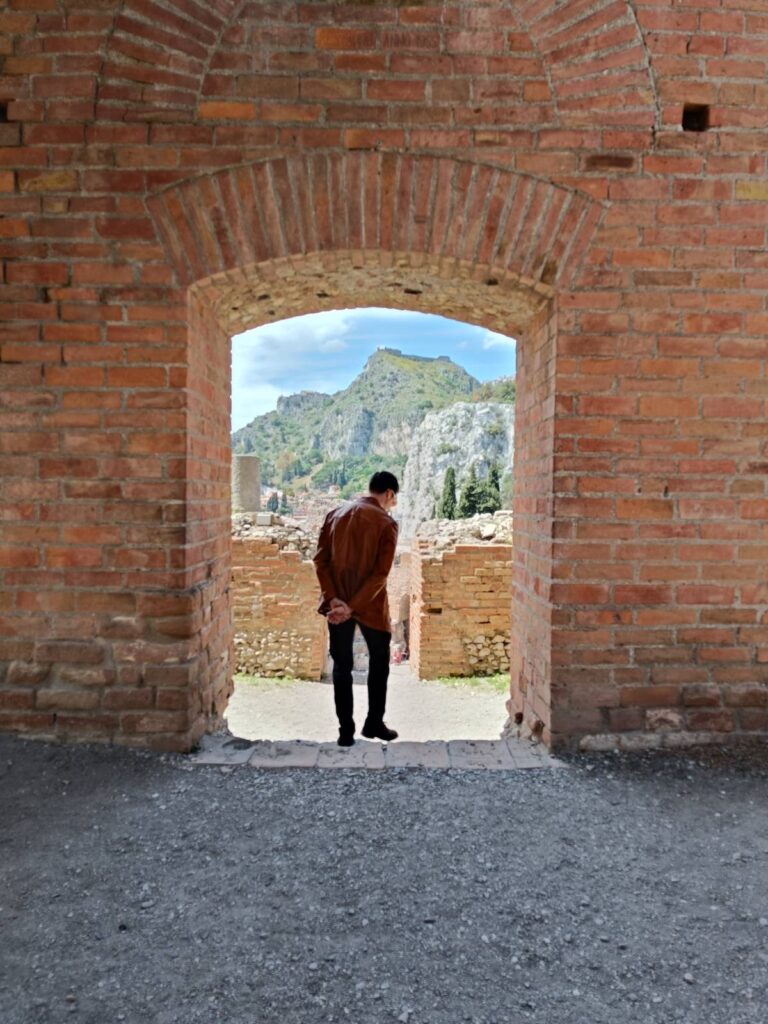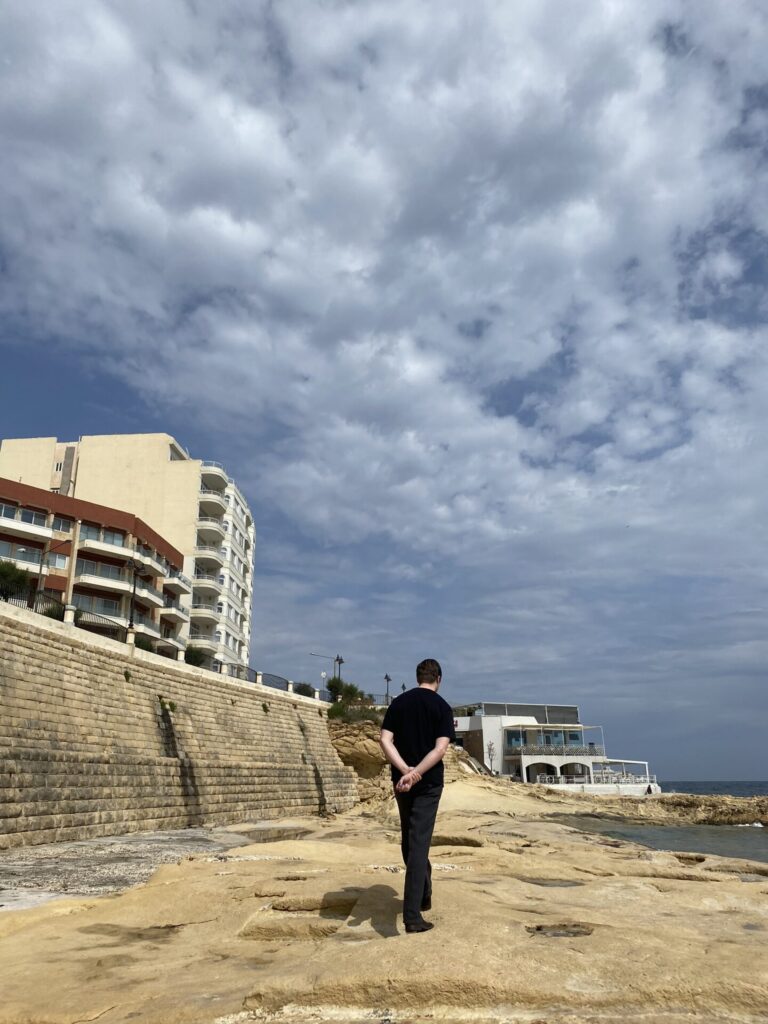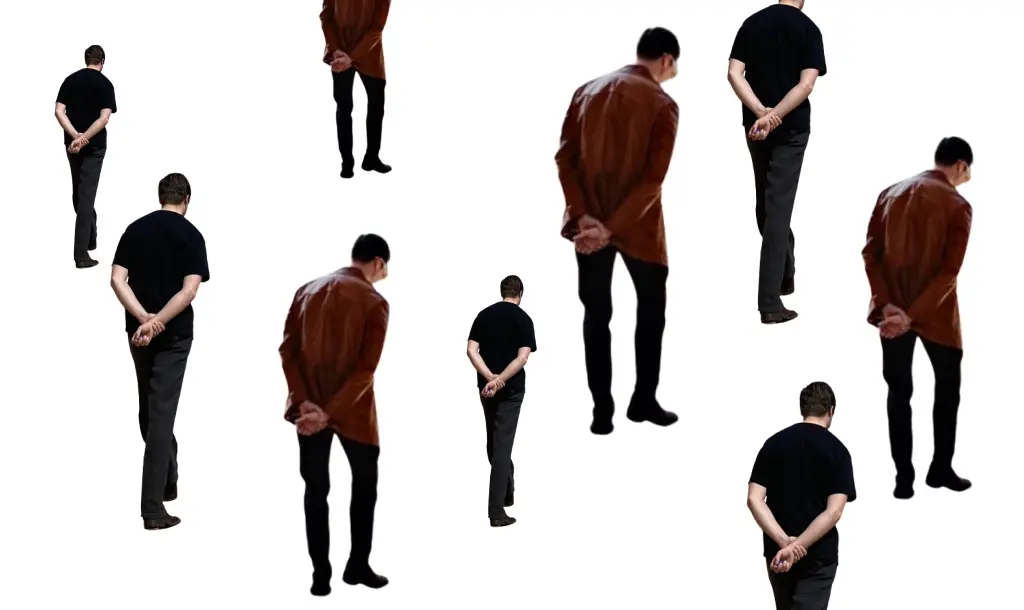Early 2023, I stayed in the Italian Alps for 6 weeks. 1.5 months of solitude. As you can imagine, this period of isolation had a profound effect on me. But maybe not in the way you might think…
After I had returned to Malta, I realised what it was.
I had changed my form.
I no longer moved through life in the same way as I used to do before.

Notes on the optimal form
Let me explain to you what I mean when I say I have changed my form. To explain this, I have to tell you about my routine in Italy. Every morning, I would go for a walk through the forest. This was part of my research expedition, I was studying the trees in the area. The research required me to check on the trees every morning. And during those last few morning walks, I realised that my way of walking had changed. I don’t really remember how I used to walk before, but all of a sudden I started to walk with my hands behind my back. Like a grandpa. Or like people how walk in a museum. Weird? Strange? Why? What does it mean?
For me personally, it meant a lot. I realised this afterward.
Because when I was a kid, I used to walk like that a lot. So the fact that I had started to walk like this again now, meant to me that I had somehow recaptured some of the person that I was when I was a kid.
What kind of kid was I?
In order to understand my upbringing, it is important to know that I come from a long line of teachers. My parents are both teachers, my grandfather was a teacher, his father was a teacher, et cetera. Through this lineage, the love for learning has been passed through. From a young age, my siblings and I were taken to museums and nature parks. Instead of relaxing beach holidays, we went for long cycling holidays to visit curious landmarks with remarkable histories. This meant that I always returned to school after the summer without any holiday friends, but with a lot of obscure facts about weird things.
It also meant that, before I could even speak, I was exposed to the natural posture of the ‘respectful observer’. You know, those types of people in museums that always walk with their hands behind their backs.
And so, by spending so much time among these ‘respectful observers’ (more on that later), my body naturally shaped itself into the same form.
Therefore, when I think of myself as a kid, I see myself with my hands behind my back. Walking through old castles, modern museums, and curious nature parks. Reading signs, processing the information, and fantasising about historical events.
So for me, walking with my hands behind my back represents these values of curiosity, respect, observation, reflection, and fantasy.

Decoding the body language
But of course, it would be even more interesting if we could find some stone-hard facts about this posture. Right?
Why do people always seem to resort to this posture when they enter a museum? Is there a magic switch that gets toggled as soon as we enter these sorts of places? Is there something these people are trying to communicate with their posture?
When you google the ‘hands behind your back’-posture, there are a few ‘body-language’ websites that give some insight into what is being communicated.
The websites psychmechanics.com and bodylanguagematters.com claim it’s one of these options:
- Dominance
- “I’m so not afraid that I’ve exposed my vital organs. I challenge anyone to attack me. I know no one will dare to do that.”
- Respectful gesture
- It can be seen as a sign of respect to the other person. Soldiers will use this when they are at ease.
- Discomfort
- When the hand, wrist, or arm is clasped tightly behind the back, the person subconsciously gives themselves a ‘self-hug’. They’re in a situation where they could use a hug to feel more secure.
- Hiding
- When people talk openly, they often speak with their hands. They display their palms and make hand gestures. Hiding the hands behind the back can thus be an attempt to hide something or be secretive.
Reading these categories made a lot of sense to me. When I think of that posture, I think of a combination of a few of these factors. I’d like to call that combination the ‘respectful observer’.
I think this is the role that most people turn to when they enter a museum. They take on a ‘respectful, observing attitude’. They want to say ‘I’m open to these new experiences that the art can teach me.’ They acknowledge that they are there to learn and observe, instead of contributing to any discourse. Therefore, they don’t need their hands to communicate. They can be behind their back. Signaling that they are merely respectful observers in this house of art. And of course, they are scared to death that they will break any of the valuable objects around them. Another good reason to keep their hands safely behind their back 🙂

My role as a respectful observer
I relate to the role of being a ‘respectful observer’. I think that’s why I had my hands behind my back as a kid, and it’s also why I’m walking like that more and more again now.
It relates to how I’m slowly losing the arrogant ambition of my early adolescence. Less and less, I have the idea that my goal in life should be to accomplish great things. Many of the things that used to constitute greatness for me are losing their meaning. Slowly but surely, money and status are becoming less significant to me. Less and less I regard myself as an individual. And more and more I can see my position in the weirdly complex ecosystem of the universe.
That transition from an arrogant individual to a more humble part of the universe requires a lot of reflection. And to reflect is to analyse your situation from a third-person perspective. To step out of your position and attempt to see the bigger picture. To observe, to wonder, to analyse, to think.
And that is why I’m so glad to see myself returning to this posture. Because to me, that posture represents all those things. Observing, wondering, analysing, reflecting, thinking. Wonderful!